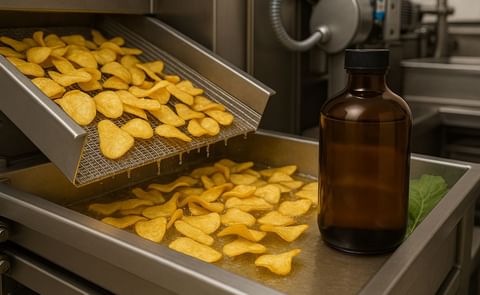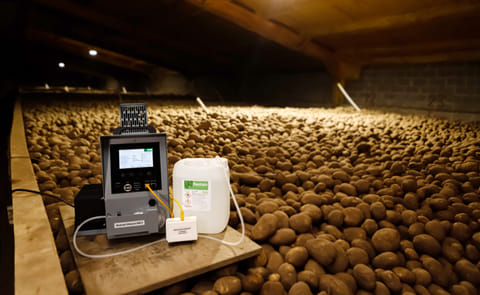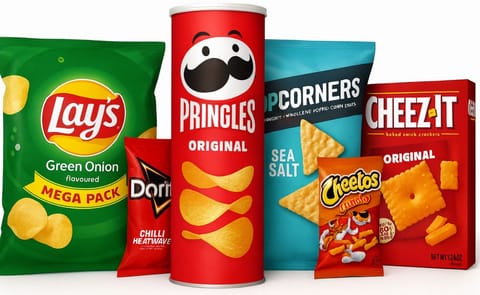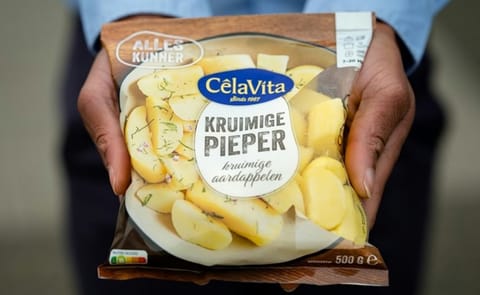FAO Food Price Index marginally declines in July: lower cereal quotations offset higher vegetable oil, meat and sugar prices
FAO Food Price Index marginally declines in July: lower cereal quotations offset higher vegetable oil, meat and sugar prices

The FAO Food Price Index* (FFPI) stood at 120.8 points in July 2024, marginally below its revised figure for June, as a decrease in the price index for cereals outweighed increases in the price indices for vegetable oil, meat products, and sugar, while the dairy index was almost unchanged. Overall, the FFPI remained 3.1 percent lower than its corresponding value one year ago and 24.7 percent below its peak of 160.3 points reached in March 2022.
The FAO Cereal Price Index averaged 110.8 points in July, down 4.4 points (3.8 percent) from June and 15.1 points (12.0 percent) from its July 2023 value. Global export prices of all major cereals decreased month on month for a second consecutive month. Increasing seasonal availability from ongoing winter wheat harvests in the northern hemisphere, and generally favourable conditions in Canada and the United States of America supporting expectations for large spring wheat harvests continued to put downward pressure on international wheat prices.
Strong exporter competition and weak global demand also weighed on wheat prices. Seasonal pressure underpinned a decline in maize export prices as well. Harvesting in Argentina and Brazil progressed ahead of last year’s pace, while crop condition ratings in the United States of America remained above last year and average levels. Among other coarse grains, world prices of barley and sorghum also fell in July. The FAO All Rice Price Index declined by 2.4 percent in July, as generally quiet trading activities kept Indica and Japonica quotations under downward pressure.
The FAO Vegetable Oil Price Index averaged 135.0 points in July, up 3.2 points (2.4 percent) from June and marking the second consecutive increase to a one-and-a-half-year high. The continued increase of the index reflected higher global quotations across palm, soy, sunflower and rapeseed oils.
International palm oil prices rose marginally, mostly underpinned by firm global import purchases that coincided with below-potential output growth in Indonesia, the world’s leading palm oil producer. Meanwhile, world soy oil quotations appreciated for the third consecutive month in July, mainly reflecting persistent robust demand from the biofuel sector in the Americas. As for sunflower and rapeseed oils, rising international prices were mainly underpinned by deteriorating crop prospects in several major producing countries of respective oilseeds for the 2024/25 season.
The FAO Meat Price Index* averaged 119.5 points in July, up 1.5 points (1.2 percent) from June, standing 1.0 points (0.8 percent) above its corresponding value a year ago. In July, international ovine and bovine meat prices increased, principally underpinned by robust import demand and seasonally falling supplies of animals for slaughter in Oceania.
Meanwhile, international poultry meat prices increased due to strong import demand, especially from the Near East and North Africa, amidst challenges to production stemming from animal diseases, especially avian influenza outbreaks in several major producing regions. By contrast, pig meat prices declined marginally, reflecting an oversupply situation in Western Europe due to weaker foreign and internal demand, reportedly further exacerbated by China’s opening of an anti-dumping probe and continuing constraints in accessing foreign markets due to outbreaks of African swine fever.
The FAO Sugar Price Index averaged 120.2 points in July, up 0.8 points (0.7 percent) from June, marking a second consecutive monthly increase, but still down 26.1 points (17.9 percent) from its value a year ago. The increase in July was driven by lower-than-expected sugar production in Brazil in the first half of the month, which outweighed the downward pressure exerted by improved monsoon rainfall in India and conducive weather conditions in Thailand. In addition, lingering concerns over the impact of prolonged dry weather conditions on crop yields in Brazil in the coming months and recent increases in ethanol prices further supported global sugar prices.
Unlike for other commodity groups, most prices utilized in the calculation of the FAO Meat Price Index are not available when the FAO Food Price Index is computed and published; therefore, the value of the Meat Price Index for the most recent months is derived from a mixture of projected and observed prices. This can, at times, require significant revisions in the final value of the FAO Meat Price Index which could in turn influence the value of the FAO Food Price Index.
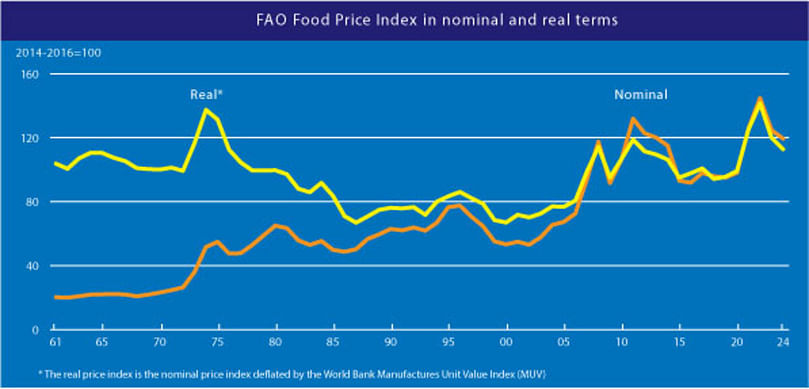
FAO Food Price Index in nominal and real terms





